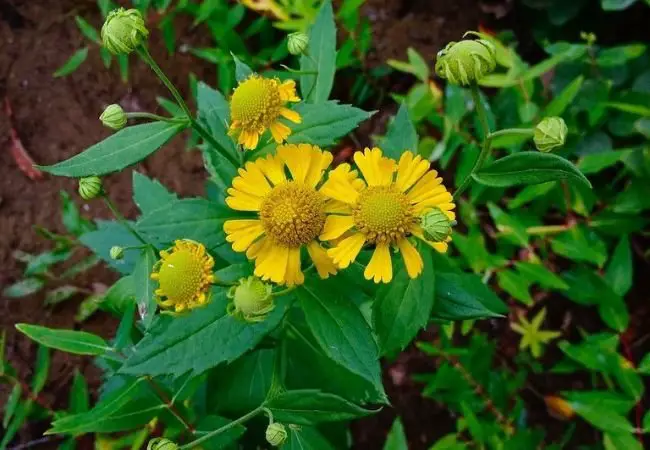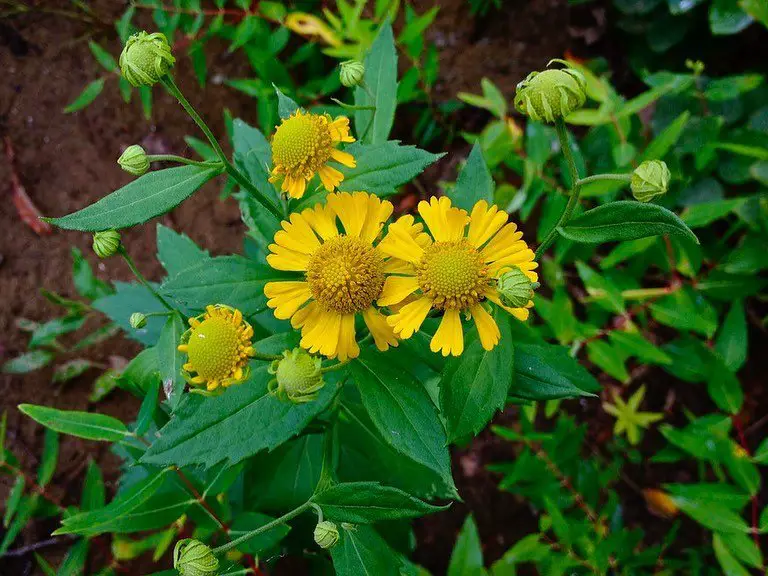Discover the charm of Common Sneezeweed Flowers. Learn how to grow these cheerful, late-blooming perennials that brighten gardens and support pollinators. Perfect for both novice and experienced gardeners!
Common Sneezeweed, scientifically known as Helenium autumnale, is a vibrant and versatile native plant that adds a burst of color to late summer and fall gardens. Despite its misleading name, this flower doesn’t actually cause sneezing. In this article, we’ll explore the world of Common Sneezeweed and why it might be a perfect addition to your garden.
Here’s an easy-to-understand chart for Sneezeweed:
| Attribute | Details |
|---|---|
| Botanical Name | Helenium spp. |
| Common Name | Sneezeweed |
| Plant Zone | 3-9 |
| Sun Exposure | Full Sun |
| Soil Type | Well-drained, moist soil |
| Watering | Moderate to high, keep soil consistently moist |
| Growth Habit | Herbaceous perennial |
| Height/Spread | 3-5 feet tall, 1-2 feet wide |
| Special Features | Bright |
What is Common Sneezeweed?
Common Sneezeweed is a member of the Asteraceae family, which includes daisies and sunflowers. Native to North America, these sturdy perennials produce bright, daisy-like flowers with distinctive wedge-shaped petals surrounding a prominent center disk.
Key Features of Common Sneezeweed
- Appearance Cheerful yellow, orange, or red flowers with a dome-shaped center.
- Bloom time Late summer to fall, providing color when many other plants are fading.
- Height Typically grows 3-5 feet tall, making it perfect for the back of borders.
- Native range Found naturally across most of North America.
Benefits of Growing Common Sneezeweed
- Attracts pollinators Bees, butterflies, and other beneficial insects love these flowers.
- Long-blooming Provides color from late summer into fall.
- Adaptable Can thrive in various soil types and moisture levels.
- Low maintenance Once established, requires minimal care.
How to Grow Common Sneezeweed
Growing Common Sneezeweed is relatively straightforward. Here’s what you need to know:
- When to plant Plant in spring or early fall.
- Where to plant Choose a spot with full sun to partial shade. Tolerates USDA hardiness zones 3-8.
- Soil requirements Prefers moist, well-draining soil but adapts to various conditions. Learn about soil types from the University of Minnesota Extension.
- Planting Space plants about 18-24 inches apart. Water thoroughly after planting.
- Care Water regularly during the first growing season. Deadhead spent blooms to encourage more flowers.
Common Sneezeweed in Different Garden Styles
Common Sneezeweed can enhance various garden types:
- Native plant gardens As a North American native, it’s perfect for natural landscapes.
- Rain gardens Tolerates wet conditions, making it suitable for rain gardens.
- Cottage gardens Adds height and late-season color to informal garden designs.
Dealing with Common Sneezeweed Problems
While generally easy to grow, Common Sneezeweed can face some issues:
- Powdery mildew Improve air circulation and avoid overhead watering. Learn more from the Missouri Botanical Garden.
- Leaf spot Remove affected leaves and ensure good air circulation.
Companion Plants for Common Sneezeweed
Common Sneezeweed pairs well with other late-blooming perennials:
Using Common Sneezeweed in Bouquets
Common Sneezeweed makes excellent cut flowers. Here are some tips:
- Cut stems in the morning when flowers are fully open.
- Remove leaves that will be below the water line.
- Change water every few days to extend vase life.
The Name “Sneezeweed”
Despite its name, Common Sneezeweed doesn’t typically cause sneezing. The name comes from the historical use of its dried leaves in snuff, which was used to induce sneezing to “clear the head.” Learn more about plant naming from the Royal Horticultural Society.
Common Sneezeweed is a delightful and easy-to-grow perennial that brings late-season cheer to gardens. With its sunny flowers, pollinator-friendly nature, and adaptability, it’s a valuable addition to various garden styles. Whether you’re creating a native plant garden, looking for late-blooming color, or simply want to support local wildlife, Common Sneezeweed is worth considering for your outdoor space.
For more information on native plants and gardening, visit the Lady Bird Johnson Wildflower Center.
For more gardening tips and plant care guides, visit usagardenhub.com.


